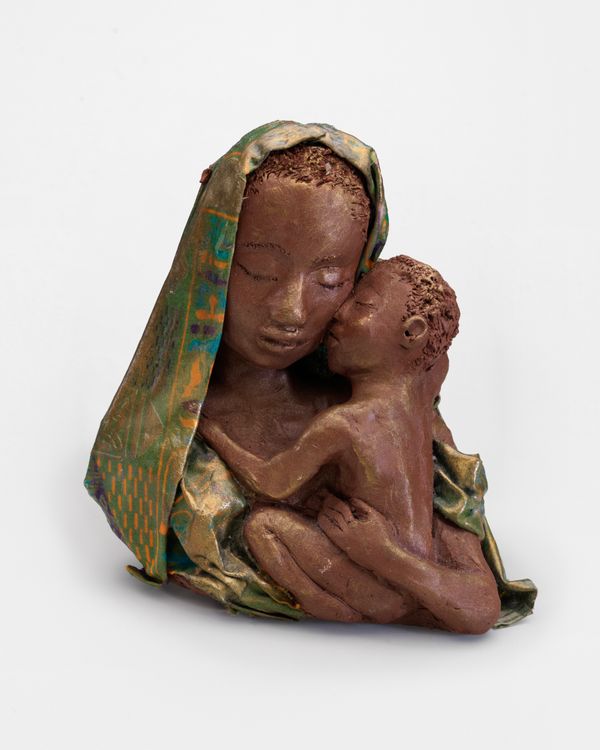
Art: Collection of Michael Sherman and Carrie Tivador
The Reverend Joyce McDonald says a pastor once told her to “ask God what type of artist you are.” She says God responded, “You’re a testimonial artist.” McDonald’s testimonies come in the form of mostly unfired clay sculptures, sometimes embellished with glitter, nail polish, fabric, or paper towels. These figures are very small and simple (a mother and child, a woman praying) and almost naïve in affect (they carry titles like Sweet Peace and Covered With Love), but don’t let their modest appearance or diminutive stature fool you. The first major exhibition of her work, “Ministry: Reverend Joyce McDonald,” at the Bronx Museum, glows powerfully with spiritual feeling and is one of the best shows of the year. McDonald’s great theme is one common to both Christianity and art: that out of great suffering comes rebirth and redemption.
She speaks from harrowing experience. McDonald’s life was beset by addiction and abuse until she found religion in the 1990s and got clean. In 1995, she was diagnosed with HIV. In 1997, she entered an art-therapy program funded by the Elton John AIDS Foundation. While she had dabbled in art since she was a girl, it was this program that introduced her to clay. “I could see that spark in my artist’s mind. And I could not stop,” she has said. “The deepest, darkest secrets of my life all came out in clay.” Now 74, she was ordained as a minister in 2009.
There is an intimate intensity to her work. Family Grief depicts McDonald’s father, who died in 1977, in his coffin, surrounded by family. “That same day I started using drugs,” she has said. Her father appears again in My Dad, My Hero (Will McDonald), a bust painted gold. He wears a camera around his neck — a tribute to his profession and calling — like a cross. Her father is both a source of anguish and a beaming emblem of pride.
So many of McDonald’s sculptures manage to convey the joy of inner transformation. The faces smile softly with their eyes closed, beatific in their bliss without falling into bathos. Glory (A Taste of Sweetness After Near Death) features McDonald in a luminous purple shawl, gazing heavenward. Beauty and the Peace shows a woman with a COVID mask falling from her face. Beauty in the Midst (Strength) is a three-faced being bedecked in pearls, radiating like a talisman. Mother’s Prayers echoes ancient votive statues in its compact elegance, while Covered With Love could be a folk version of a Renaissance-era Madonna and child.
Several pieces delve into “identity politics” — a term that she infuses with new life. The series Our Lives Mattered — the slogan heartbreakingly rendered in the past tense — memorializes George Floyd, Breonna Taylor, Sandra Bland, and Trayvon Martin. These figures are tender reliquaries, a reminder that the “identity” in “identity politics” doesn’t necessarily come from race or gender but devastating experiences that McDonald herself is not foreign to.
What astonishes is not only the life but the way she makes its toll visible. Clay, humble and unglamorous, becomes the vessel of grace. McDonald’s sculptures recall Sister Corita Kent, who turned slogans into gospel. We think of Ana Mendieta, who merged ritual and wound. Gauguin’s mottled ceramic heads and Rodin’s figures pitched between ruin and divinity both come to mind. Tracey Emin’s monumental sculpture Mother is also an important touchstone. “I am so blessed,” McDonald has said. “God gave me this gift so I could show the world that even in pain, there is joy.”

